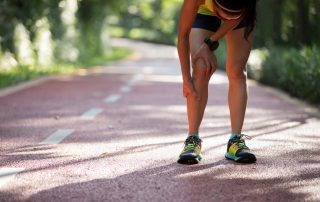Anterior Cruciate Ligament (ACL) injuries are relatively common in Australian sports like football, basketball, netball, and alpine skiing. Advances in surgical techniques and rehabilitation now allow most athletes to return to their sports.
The knee, a hinge joint, is designed for flexion (bending) and extension (straightening). It is made up of the lower end of the femur (thigh bone), the upper end of the tibia (shin bone), and the patella (kneecap). The chief muscles involved are the quadriceps (“quads”), which allow extension, and the hamstrings, which flex the knee.
The knee is stabilised by several major ligaments: the Anterior Cruciate (ACL), Posterior Cruciate (PCL), Medial (MCL), and Lateral (LCL) Collateral Ligaments, as well as the muscles that act upon the knee.
The ACL prevents the femur from sliding forward under weight, and helps inhibit rotation in the joint. ACL injuries typically occur during activities that involve sudden pivots, deceleration, or jumping and landing. A direct blow to the knee by another player can also lead to these injuries, with women being statistically more prone to ACL damage than men.

